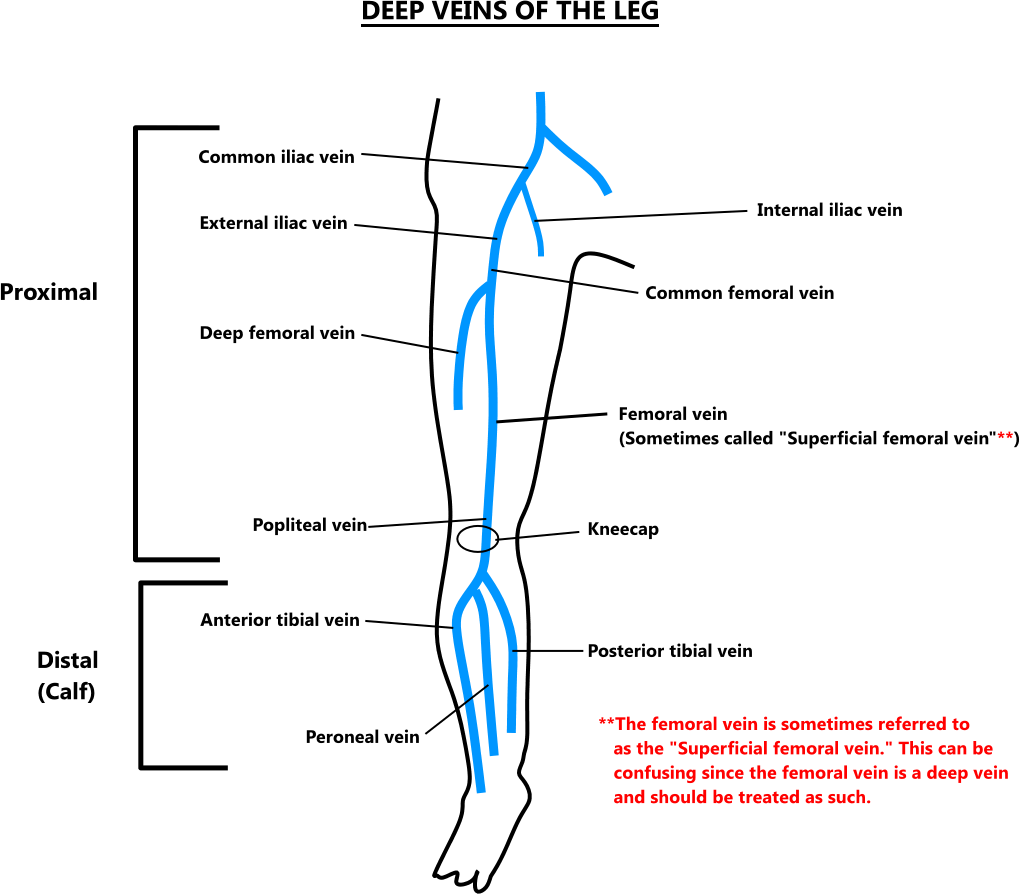Makindo Medical Notes"One small step for man, one large step for Makindo" |
|
|---|---|
| Download all this content in the Apps now Android App and Apple iPhone/Pad App | |
| MEDICAL DISCLAIMER: The contents are under continuing development and improvements and despite all efforts may contain errors of omission or fact. This is not to be used for the assessment, diagnosis, or management of patients. It should not be regarded as medical advice by healthcare workers or laypeople. It is for educational purposes only. Please adhere to your local protocols. Use the BNF for drug information. If you are unwell please seek urgent healthcare advice. If you do not accept this then please do not use the website. Makindo Ltd. |
Venous Supply of the leg
-
| About | Anaesthetics and Critical Care | Anatomy | Biochemistry | Cardiology | Clinical Cases | CompSci | Crib | Dermatology | Differentials | Drugs | ENT | Electrocardiogram | Embryology | Emergency Medicine | Endocrinology | Ethics | Foundation Doctors | Gastroenterology | General Information | General Practice | Genetics | Geriatric Medicine | Guidelines | Haematology | Hepatology | Immunology | Infectious Diseases | Infographic | Investigations | Lists | Microbiology | Miscellaneous | Nephrology | Neuroanatomy | Neurology | Nutrition | OSCE | Obstetrics Gynaecology | Oncology | Ophthalmology | Oral Medicine and Dentistry | Paediatrics | Palliative | Pathology | Pharmacology | Physiology | Procedures | Psychiatry | Radiology | Respiratory | Resuscitation | Rheumatology | Statistics and Research | Stroke | Surgery | Toxicology | Trauma and Orthopaedics | Twitter | Urology
Related Subjects: |The Coronary Arteries |The Axillary Artery |The Brachial Artery |The Carotid Artery |The Femoral Artery |The Popliteal artery |The Subclavian Artery |The Iliac Artery |The Brachial Artery |The Axillary Artery |The Radial and Ulnar Artery
The venous supply of the leg consists of deep veins, superficial veins, and perforating veins. These veins work together to return deoxygenated blood from the lower extremities to the heart.
Deep Veins
- Anterior Tibial Veins :
- Course: Accompany the anterior tibial artery and drain the anterior compartment of the leg.
- Join the posterior tibial veins to form the popliteal vein.
- Posterior Tibial Veins :
- Course: Accompany the posterior tibial artery and drain the posterior compartment of the leg.
- Join the anterior tibial veins to form the popliteal vein.
- Peroneal (Fibular) Veins :
- Course: Accompany the peroneal artery and drain the lateral compartment of the leg.
- Join the posterior tibial veins.
- Popliteal Vein :
- Formed by the union of the anterior and posterior tibial veins.
- Course: Ascends through the popliteal fossa and continues as the femoral vein above the knee.
- Femoral Vein :
- Course: Continuation of the popliteal vein, it ascends through the thigh.
- Becomes the external iliac vein as it passes under the inguinal ligament.
- Deep Femoral Vein (Profunda Femoris Vein) :
- Drains the deep structures of the thigh and joins the femoral vein.

Superficial Veins
- Great Saphenous Vein :
- Course: The longest vein in the body, it ascends from the medial side of the foot, along the medial aspect of the leg and thigh.
- Drains into the femoral vein at the saphenofemoral junction near the groin.
- Small Saphenous Vein :
- Course: Originates on the lateral side of the foot, ascends along the posterior aspect of the leg.
- Drains into the popliteal vein at the popliteal fossa.
Perforating Veins
- Function :
- Connect the superficial veins to the deep veins, allowing blood to drain from the superficial system into the deep system.
- Contain one-way valves to prevent backflow of blood.
Clinical Relevance
- Deep Vein Thrombosis (DVT) :
- Formation of a blood clot in the deep veins of the leg, often in the calf or thigh.
- Symptoms: Swelling, pain, redness, and warmth in the affected leg.
- Risk Factors: Prolonged immobility, surgery, trauma, and certain medical conditions.
- Treatment: Anticoagulation therapy, compression stockings, and in severe cases, thrombolysis or surgery.
- Varicose Veins :
- Enlarged, twisted superficial veins, often due to valve incompetence in the great or small saphenous veins.
- Symptoms: Visible, swollen veins, aching pain, and heaviness in the legs.
- Treatment: Lifestyle changes, compression stockings, sclerotherapy, and surgical procedures.
- Chronic Venous Insufficiency (CVI) :
- A condition where the veins cannot efficiently return blood to the heart, often due to valve dysfunction.
- Symptoms: Swelling, skin changes, and ulcers in the lower legs.
- Treatment: Compression therapy, medications, and sometimes surgical intervention.
- Venous Ulcers :
- Open sores that develop due to chronic venous insufficiency and poor blood flow.
- Location: Typically occur on the inner aspect of the lower leg, just above the ankle.
- Treatment: Wound care, compression therapy, and addressing underlying venous insufficiency.
Summary
The venous supply of the leg includes a network of deep veins, superficial veins, and perforating veins that work together to return deoxygenated blood to the heart. The deep veins include the anterior tibial, posterior tibial, peroneal, popliteal, and femoral veins. The superficial veins include the great and small saphenous veins. Perforating veins connect the superficial and deep systems. Understanding the anatomy and clinical relevance of these veins is essential for diagnosing and managing conditions such as DVT, varicose veins, chronic venous insufficiency, and venous ulcers.